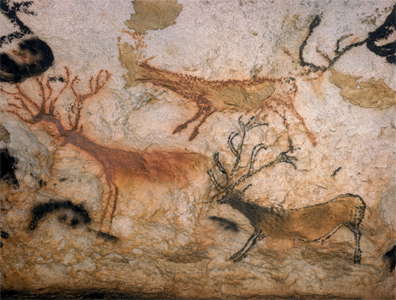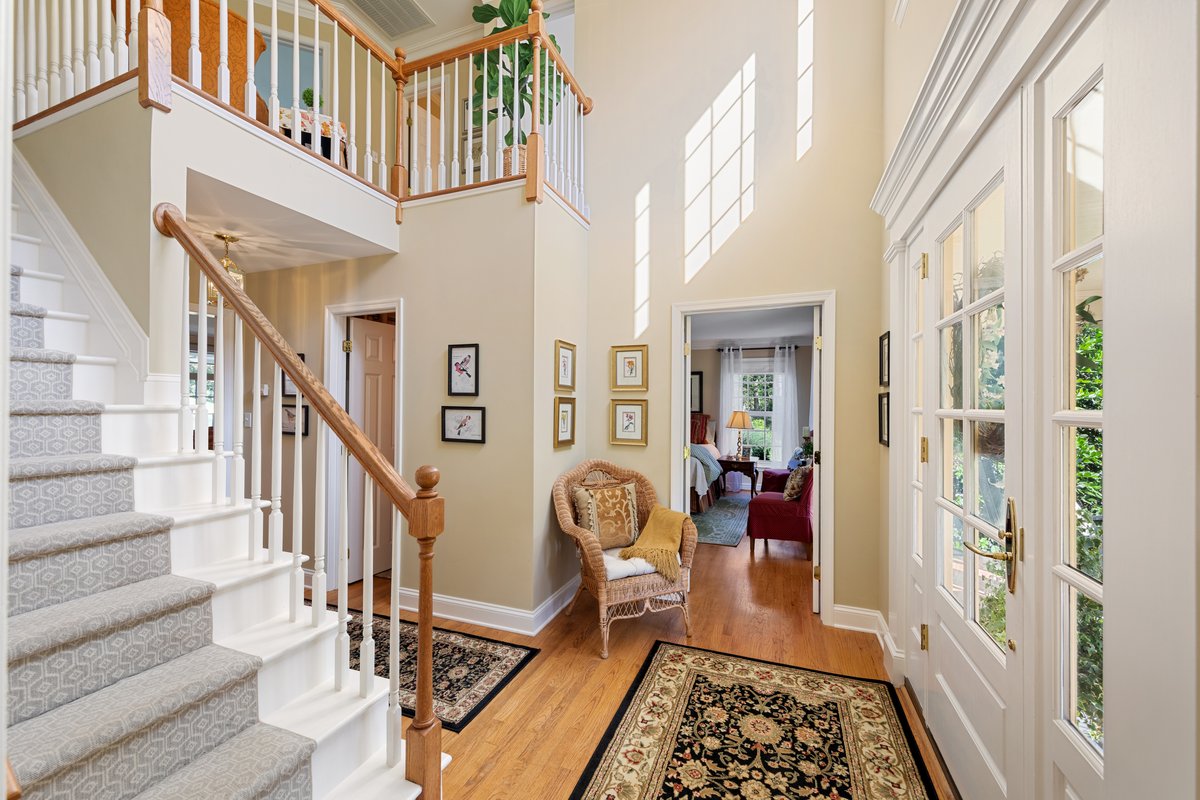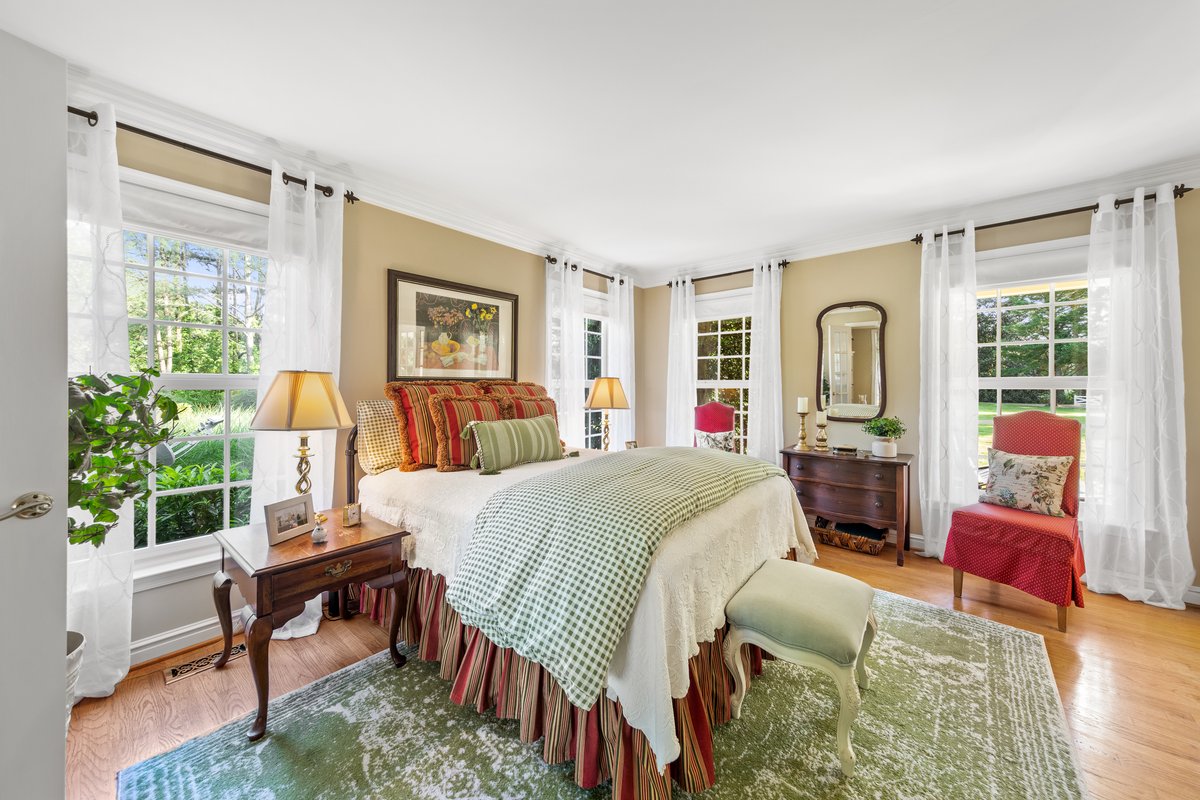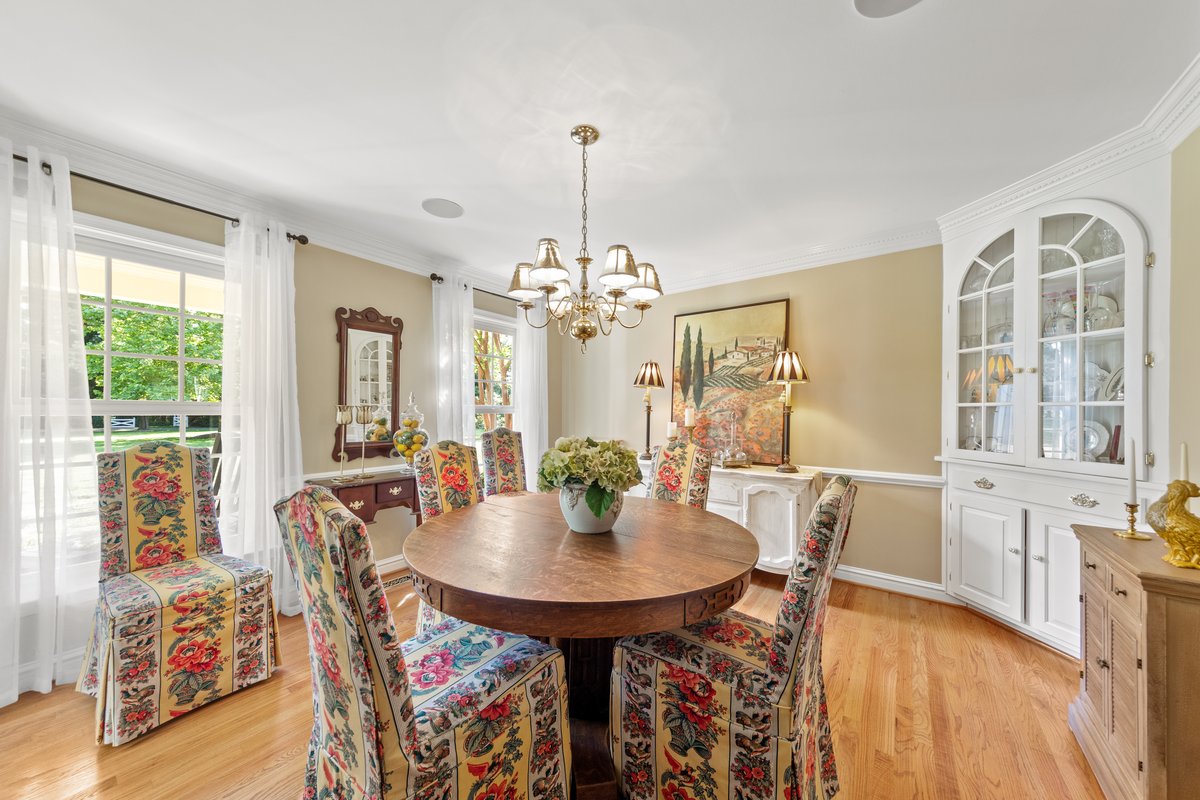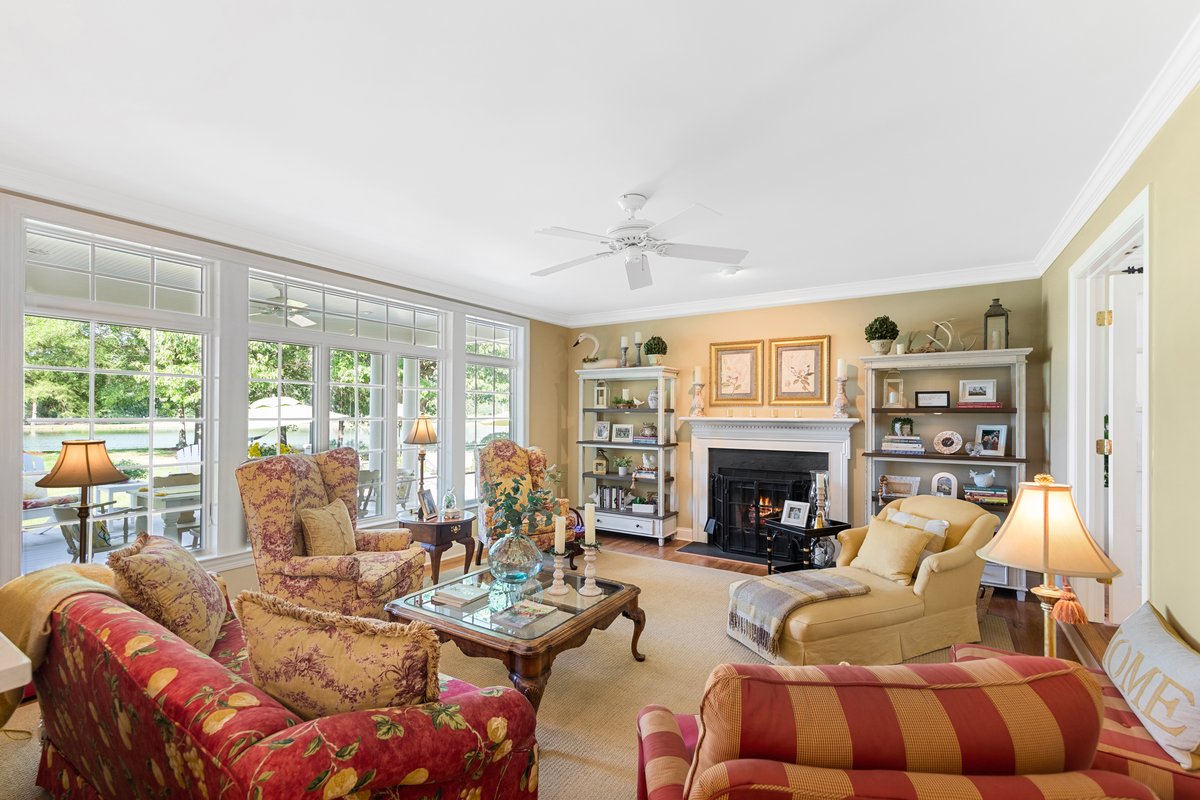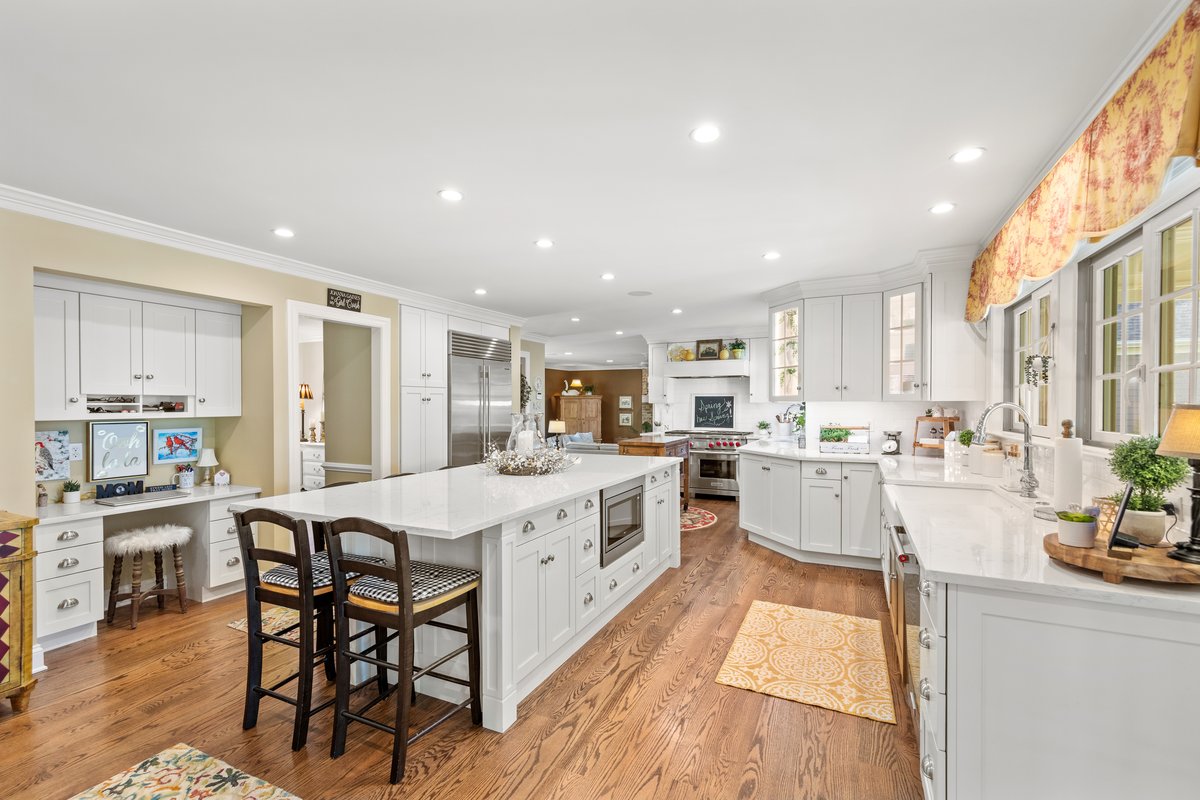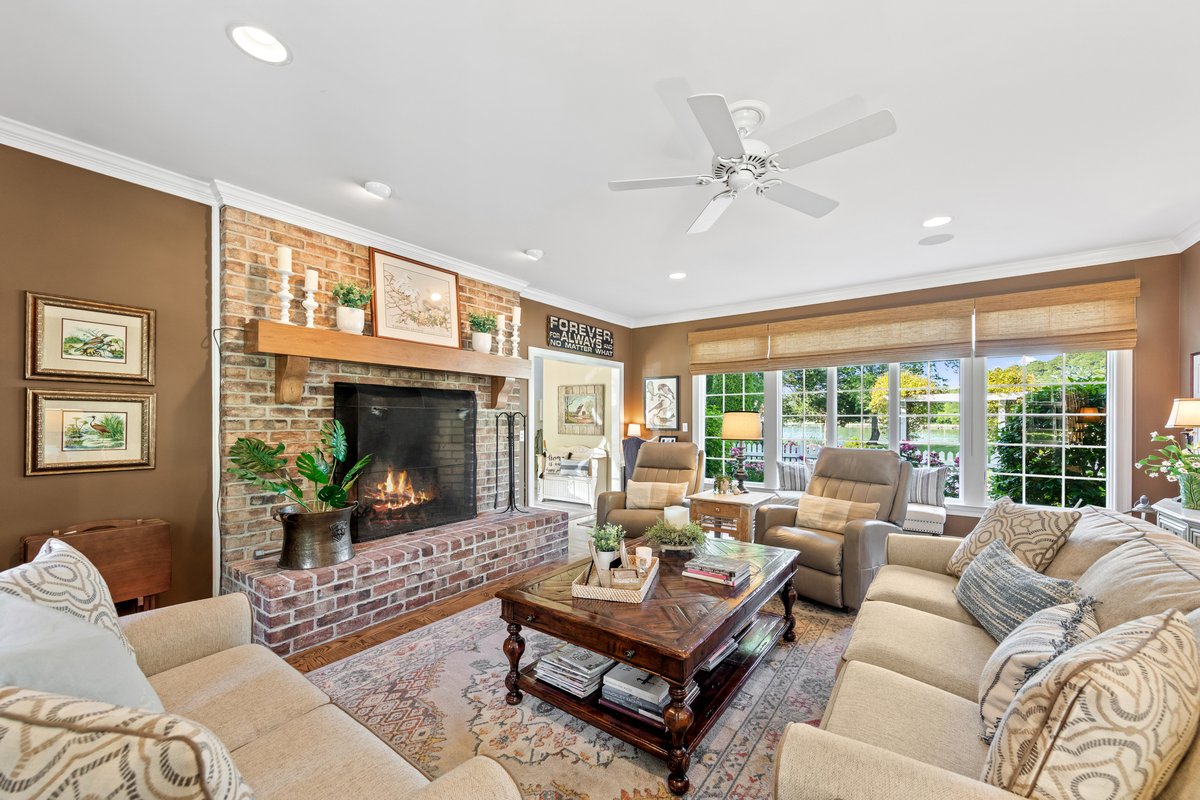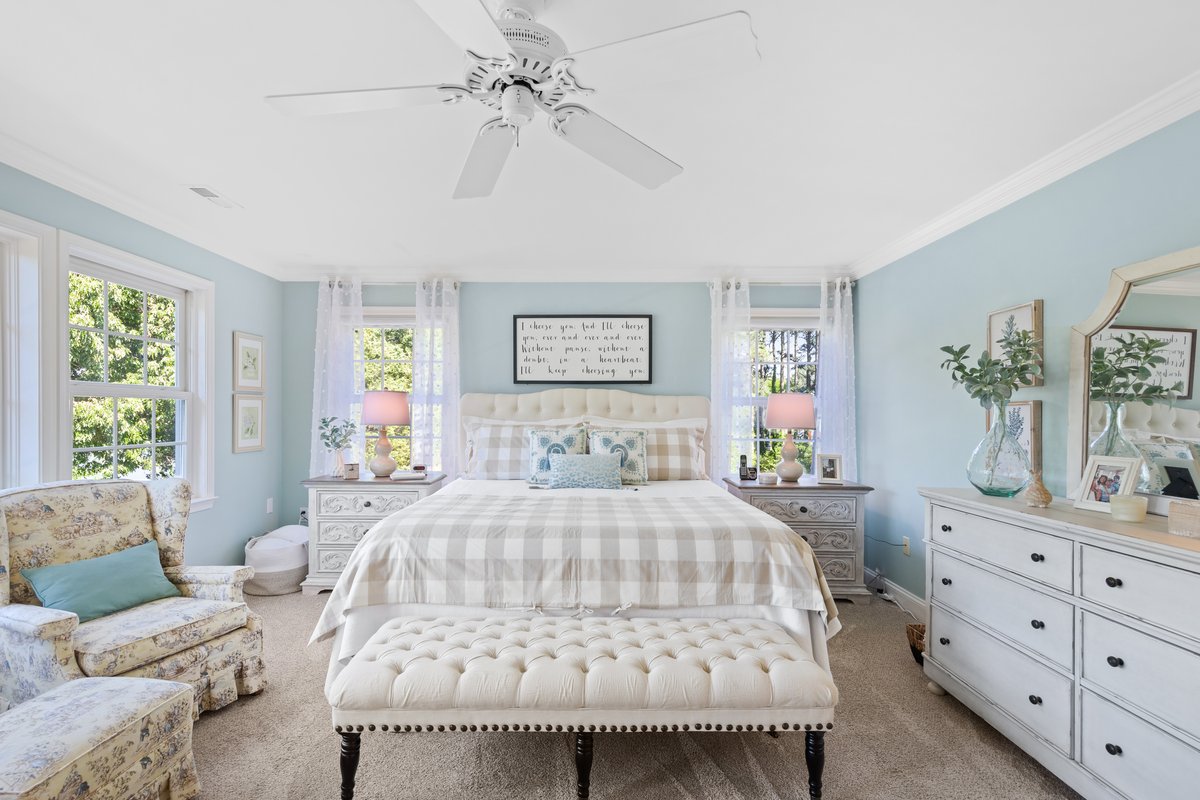The phrase in one of my fave Joni Mitchell songs…”I felt unfettered and alive…” always reminds me of an idyllic summer in France after graduation from architectural school. I attended a 10 week session at the E’cole Des Beaux Arts and spent each weekend roaming Paris’ arrondissements with my fellow students. I came home with a deep appreciation for mansard roofs, (which has slopes on all four sides of a building, unlike a gambrel, with slopes on two sides). When I arrived at this property and saw the mansard roofs on both the carriage house and main house, I knew the top floors would be tres magnifique!
I began my tour by walking along part of the 200 feet of waterfront along the Choptank River as a family of ducks left the river to glide into the tidal pond along one side of the property. The house is sited perpendicular to the shoreline and a deep wrap-around porch offers broad vistas up and down the river. The exterior white color palette of stucco on the first floor and white siding on the second floor stands out against the background of tall trees, one of which a bald eagle has claimed for its nest.
The roof of the main house’s side porch extends over to become a covered porch at the former two-car garage. The covered walkway leads to the front door that opens into a spacious foyer that is part of an open plan living-dining-kitchen area.
When the agent opened the door, I immediately realized that the French Eclectic exterior has an interior inspired by “barndominium” design. After the 2016 segment of HGTV’s “Fixer Upper” featured a transformation of a horse barn into a family “barndominium” with its free-span spaces, rustic wooden staircases, barn doors, wood flooring and reclaimed wood elements, the design caught on across the country. I loved this house’s wood floors in varied colors, wood beams and the floating wood stairs that contrasted with the white walls to reflect the sunlight from the numerous long windows and glass doors. The stairs’ landing is supported by hand hewn tree limbs and a reclaimed wood framed window has a clever use as a railing for transparency. The dramatic three-sided stucco fireplace is the focal point of the open floor plan.
The dining area is centered on a wide picture window with operable units on each side for tranquil views of the tidal pond. Between the cushioned window seat and the upholstered side chairs, there is plenty of seating for small or large groups. I especially liked the two white oak planks with live edges that combine to make the stylish table top floating above the slender deep gray iron frame. The kitchen’s light gray cabinets blend with the stainless steel appliances for a sleek contemporary look and most of the upper cabinets have glass fronts for transparency. The white countertops and the splashes of deep blue accents on the sides of the cabinetry add color. Uplights on top of the exposed beams provide soft accent lighting. Behind the kitchen is the family room that was the former two-car garage, a large pantry and a full bath.
The stairs with open risers and thick wood treads with the landing enhanced by a ledge with a wood cap built into the steep roof. Three tall woven vessels on the ledge are back lit and combined with the exposed beams above that are top lit to create a dramatic effect. The hall off the stairs leads to barn doors to access the bedrooms and baths. At the end of the hall is a large room currently furnished as a laundry but it could easily be converted to a secondary sitting room or TV space.
The primary bedroom is located at one corner with windows offering views of the river. The dormer windows’ pitched headers, exposed wood collar beams and open ceiling that follows the roof rafters’ slope accented by wood trim at roof intersections creates simple and elegant interior architecture.
White is the color of cleanliness and this bathroom’s white walls and ceiling accentuate the interior architecture. The white plumbing fixtures resting on the wood floors, the exposed beams and the water views creates an inviting place for a soothing soak. This bathroom has a clever detail of the reclaimed wood ladder in its role as a towel rack.
All of the bedrooms have great individual style and although it was difficult to choose, this Goldilocks would choose this bedroom with the bed against the mansard roof and windows on either side-wonderful geometry and materials!
The third floor waterside corner bedroom would be a perfect child’s bedroom with the window seat that connects the front and side windows. It is easy to imagine this room with toys, favorite stuffed animals and books arranged on the window seat.
If I were lucky to be a guest for an extended stay, I would claim the carriage house with its gambrel roof. The entry door opens into a foyer/laundry then another door opens into the open plan living-dining-kitchen area that spans the full depth of the house.
From the front bay window to the wrap-around windows at the rear dining area overlooking the water, this space would delight any guest. The front bay window is a cozy spot for two and the main sitting area is centered on the fireplace and the TV. The exposed beams are uplighted by a continuous light cove that cast a gentle glow. The light cove ends at the waterside dining area with its white drywall ceilings to better reflect the sunlight from the wrap around windows with a continuous built-in seat below around the large table. In between the living and dining areas is the galley kitchen with an island.
A circular stair leads to the second floor bedroom and this space truly personifies the barndominium concept with the wood sloped walls, collar beams and ceiling accented by the white drywall knee walls. The entire space is a sumptuous bedroom ensuite complete with a soaking tub.
The main house has the wrap around porch overlooking the Choptank River but the guest house has its own outdoor room, the deck overlooking the serene tidal pond. What a perfect spot to end a day at the beach or boating on the Choptank River!
This ten acre property with the main house’s seven bedrooms over two floors and the guest house’s additional bedroom is currently a vacation rental that offers myriad possibilities to a new owner. Numerous amenities include a ramp for watercraft, a waterside canopy of mature trees, extensive shoreline bulkheading, sandy beach, tidal pond, main house wrap around porch, and the guest house second flood deck. Claim your spot on a hammock or sink into an Adirondack chair on the porch for watching dramatic sunsets over the river. A bucolic setting with contemporary barndominium interiors-where else can you find all of this only an hour from the Atlantic Ocean?
For information about this property contact Coard Benson with Benson & Mangold Real Estate at 410-770-9255 (o), 410-310-4909 (c) or [email protected].For more pictures and pricing, visit www.coardbenson.com , “Equal Housing Opportunity.”
Interior design by Honor Moore, Honor Moore Studio, www.honormoore.com Photography and virtual tour by Broadview Interactive LLC, [email protected]
Jennifer Martella has pursued dual careers in architecture and real estate since she moved to the Eastern Shore in 2004. She has reestablished her architectural practice for residential and commercial projects and is a referral agent for Meredith Fine Properties. Her Italian heritage led her to Piazza Italian Market, where she hosts wine tastings every Friday and Saturday afternoons.

















